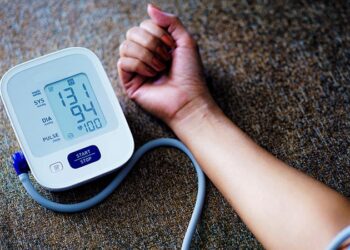TORONTO — The lack of clinical trials testing the efficacy of treatments for axial disease in juvenile spondyloarthritis (axJSpA) remains a large unmet need, according to experts.
Now, the first-ever, pediatric-specific validated classification criteria for axJSpA have been finalized and presented at the Spondyloarthritis Research and Treatment Network (SPARTAN) 2025 Annual Meeting. They promise to identify young people with unequivocal disease for clinical studies.
There’s even an online tool that makes implementation of the new criteria fast and easy.
“Our goal was to develop and validate classification criteria for axJSpA that enables identification of a relatively homogenous group for entry into observational clinical trials,” said Pamela F. Weiss, MD, pediatric rheumatologist and clinical research director in the Division of Rheumatology at Children’s Hospital of Philadelphia, Philadelphia.

Weiss is also first author of a recent report on the classification criteria in Arthritis and Rheumatology.
“We’re not intending to capture all possible subjects, but those we think would make the best trial candidates so that we can test some of the novel therapeutics currently approved for use in adults,” she said during her presentation of the criteria.
The highly specific criteria are not meant to guide clinical care, Weiss added.
‘These Criteria Really Do Perform Very Well’
“This is the first time that we have these criteria for children with this very important type of arthritis that affects the spine, the sacroiliac joints [SIJs], the hips, the knees, and the large joints of the lower limbs,” said Walter P. Maksymowych, MBChB, professor of medicine at the University of Alberta, Edmonton, Alberta, Canada, and a co-author of the report.
“These criteria really do perform very well in identifying patients with this type of arthritis — better than other criteria that have tried to capture this population of children with arthritis,” Maksymowych told Medscape Medical News.
The data-driven criteria are the product of a lengthy, collaborative, consensus-building effort involving international clinical experts, a central imaging team, an independent validation team, and physicians from around the world and their patients.

“I want to recognize that I’m presenting on behalf of an enormous group of people who all made this happen,” Weiss said.
During validation by an independent team of international experts, the dataset demonstrated a specificity of 97.5%, a sensitivity of 64.3%, and an area under the receiver operating characteristic curve (AUROC) of 0.81%.
The criteria also demonstrated high specificity in cohort subsets of cases and controls in Asia (100%), Europe (100%), North America (95.9%), and South America (100%).
A comparison of the axJSpA criteria with classification criteria for adult axial SpA (axSpA) showed that the latter all had lower specificity and AUROC. They included the Assessment of Spondyloarthritis International Society axial and peripheral SpA criteria, the International League of Associations for Rheumatology enthesitis-related arthritis criteria, and the European Spondyloarthropathy Study Group criteria for adults.
Youths Likely to Benefit From Early, Aggressive Therapy
Weiss emphasized that youths with axSpA are at a high risk for poor outcomes and likely to benefit from early, aggressive therapy. When compared with adult-onset disease, axJSpA is associated with more radiographic changes in the hips and a significantly higher risk for hip replacement. This makes recognition and treatment critical to long-term functional outcomes, Weiss said.
Although many youths with juvenile SpA and axial disease respond to biologics such as tumor necrosis factor (TNF) inhibitors, novel therapies are needed for the 10%-15% with an incomplete response or disease progression despite TNF inhibitors.
The most promising agents, including interleukin 17 inhibitors and Janus kinase inhibitors, have demonstrated efficacy in adult axSpA. The final validated axJSpA classification criteria will make it possible to test these agents in patients with juvenile-onset disease, Weiss said.
The criteria consist of seven weighted domains. The most heavily weighted is imaging of active inflammation and of structural lesions. The rest of the domains address pain chronicity, pattern and location, as well as stiffness and genetic features such as HLA-B27 positivity.
The threshold for classification of axJSpA is a score of 50 or higher out of 100. This confirms the presence of axial disease and establishes the patient as a candidate for a phase 3 trial, Weiss said.
MRI Scores Major Points
When it comes to scoring points using the classification criteria, MRI is the star of the show. Unequivocal evidence of active lesions typical of sacroiliitis on MRI of the SIJs scores 23 out of a possible 23 points. Unequivocal evidence of structural lesions typical of sacroiliitis on MRI of the SIJs also scores 23/23 points.
However, unequivocal evidence of sacroiliitis on radiograph scores a meager 13/23 points.
“MRI is an essential tool in the diagnosis of juvenile axSpA,” Maksymowych said. “You really need the additional precision and detail it provides to assess the sacroiliac joints accurately in children since the growth plates are still open. If you only have x-rays available, you’re trying to make a diagnosis with both hands tied behind your back.”
Clinicians more comfortable ordering radiographs will have to learn about MRI interpretation, he predicted. Many radiologists could be in the same boat.
“Few see enough cases to build expertise in evaluating the features of this disease on MRI,” Maksymowych explained. “It’s a challenge, but it’s also the way forward.”
Unlike adults with axSpA who often present with back pain, youth tend to present with arthritis affecting the large joints of the lower limbs, such as the ankle joint or the tarsal joints of the foot. The patient may have knee pain or a limp but only occasional back stiffness, if at all.
Clinicians should include a history of traumatic injury or injury from a repetitive activity when providing basic patient information such as age and gender, Maksymowych said.
“These criteria really pave the way to making the evaluation of axial disease easier for kids too, and for increasing the likelihood of success with study entry,” he said. “Hopefully, we’ll see some progress in the next couple of years.”
Weiss reported receiving financial support from the National Institute of Arthritis and Musculoskeletal and Skin Diseases (NIAMS) and the Spondylitis Association of America. Two coauthors also reported receiving financial support from the NIAMS. No other potential conflicts of interest were reported.
Source link : https://www.medscape.com/viewarticle/first-classification-criteria-axial-disease-juvenile-2025a1000db7?src=rss
Author :
Publish date : 2025-05-27 12:46:00
Copyright for syndicated content belongs to the linked Source.














